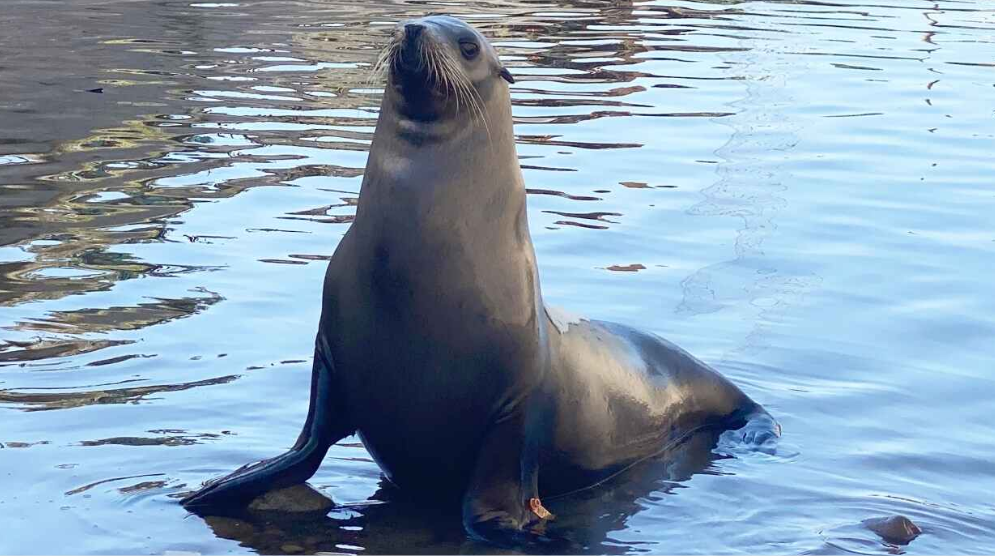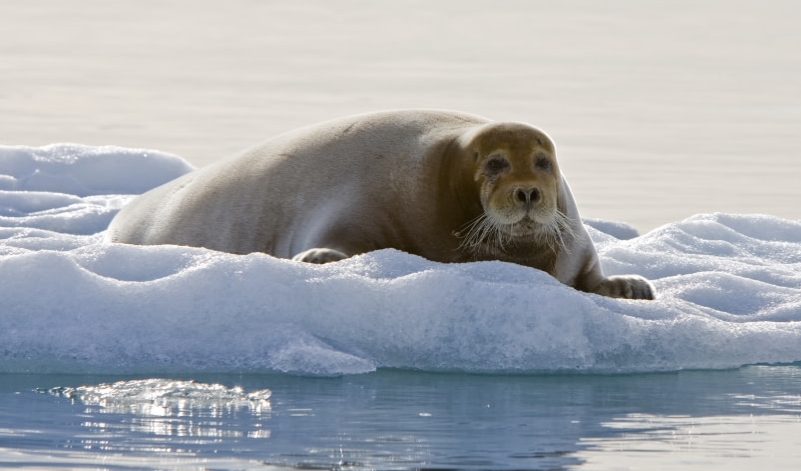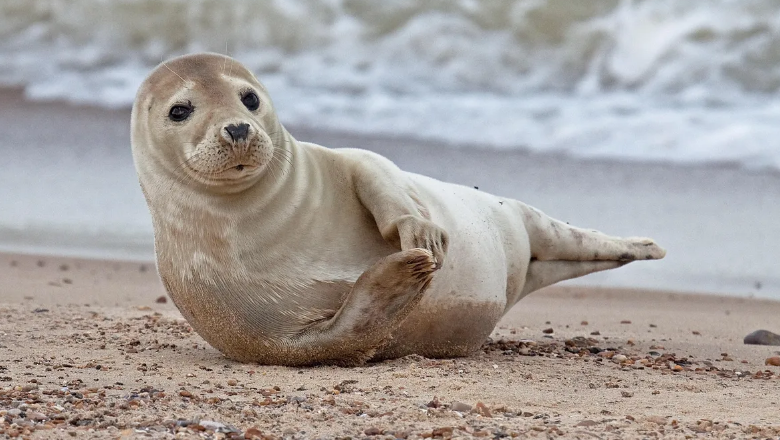Seals and sea lions, collectively known as pinnipeds, are two closely related groups of marine mammals that share many similarities in their appearance and lifestyles. Pinnipeds are characterized by their streamlined bodies, flipper-like limbs, and remarkable adaptations for life both in the water and on land.
While they belong to the same order, Pinnipedia, they are belong to different families. Order Pinnipedia, generally has three families: Phocidae (true seals or earless seals), Otariidae (sea lions, fur seals & eared seals), and Odobenidae (walrus). Read to learn more about difference between sea lions and seals.
Sea Lions

Sea lions are found along the coastlines oceans. Their range extends from the subarctic to tropical waters of the global ocean in both the Northern and Southern Hemispheres, with the notable exception of the northern Atlantic Ocean.
Sea lions are characterized by external ear flaps, long fore flippers, the ability to walk on all fours, short and thick hair, and a big chest and belly. They can reach lengths of up to 11 feet and weigh as much as 1,000 kilograms, depending on the species.
They are highly social animals, forming colonies on rocky shores or sandy beaches where they come ashore to rest, breed, and molt. Within these colonies, they engage in social behaviors like as vocalizations, grooming and territorial disputes.
Sea lions are opportunistic carnivores, with their diet primarily consisting of fish, squid, and occasionally crustaceans and other marine organisms. They are also excellent swimmers and divers, capable of reaching depths of over 600 feet and staying submerged for several minutes.
Sea lions consume large quantities of food at a time and are known to eat about 5–8% of their body weight (about 6.8–15.9 kg (15–35 lb)) at a single feeding. Sea lions can move around 16 knots (30 km/h; 18 mph) in water and at their fastest they can reach a speed of about 30 knots (56 km/h; 35 mph)
After mating, females give birth to a single pup, usually on land, and provide maternal care for several months. They have an average lifespan of 20–30 years.
Seals

Seals are found in the oceans and coastal regions of both the Northern and Southern Hemispheres. Seals are characterized by their lack of external ear flaps and their inability to use their flippers for walking on land. Instead, they move by flopping on their bellies, a distinctive behavior that sets them apart from eared seals and walruses.
They have round bodies that taper at the ends and a thick layer of blubber beneath their skin, which serves as insulation against the cold water and helps them maintain buoyancy. This blubber layer also stores energy for long periods of fasting during mating and molting seasons.
Seals can come in a range of sizes, from the 1.1 metre-long Baikal seal to the 6.5 metre-long elephant seal that can weigh up to 3,700 kilograms.
Female seals always give birth on land or sea ice. They feed their pups for up to an entire month until they’re large and strong enough to swim and live independently.
Seals are carnivorous predators and feed on fish, squid, and other marine creatures. Their hunting is aided by excellent underwater vision and an acute sense of hearing. Some species, like the leopard seal, may even prey on penguins and other seals.

While there are many differences among the species, all seals have feet shaped like fins. In fact, the word pinniped means “fin-footed” in Latin. Those fin-shaped feet make them supreme swimmers, and all pinnipeds are considered semi-aquatic marine mammals. This means they must spend some part of their lives on land or sea ice, usually during the mating and birthing seasons.
On land, seals use their bellies to move around because they have small front flippers that are thinly webbed with a claw on each small toe. In the water, seals swim easily, moving their rear flippers back and forth, similar to how a fish uses its caudal fin (tail) to propel itself through the water.
Sea Lions And Seals: Key Differences
| Characteristic | Sea Lions | Seals |
| Family | Otariidae | Phocidae |
| Ear Flaps | External, visible ear flaps | Small, internal ear openings |
| Limb Mobility | Flippers are long and have visible claws. They can rotate and walk | Flippers are short and lack visible claws. They are less mobile |
| Hind Flippers | Long, muscular hind flippers | Shorter, less muscular hind flippers |
| Locomotion | Can walk on all fours | Move by wriggling or scooting on their bellies |
| Social Structure | Often form large colonies | Tend to be solitary or in small groups |
| Vocalizations | Noisy, bark-like vocalizations | Quieter, with more subtle sounds |
| Whiskers | Shorter and fewer whiskers | Longer, more numerous and sensitive whiskers |
| Tail | Visible tail | Short, stubby or absent tail |
| Neck | Short, rigid neck | Short, rigid neck |
| Behavior | More agile and acrobatic in water | More adept at swimming and diving |
| Locomotion in Water | Powerful flippers for fast swimming | Efficient swimmers but not as agile |
| Predatory Behavior | May hunt cooperatively in groups | Tend to be solitary hunters |
| Sexual Dimorphism | Males often larger and have a mane | Less noticeable sexual dimorphism |
| Reproduction | Give birth on land, often in colonies | Give birth on land or Ice, but usually isolated |
| Forehead Shape | Broad, sloping forehead | Rounded or V-shaped forehead |
| Swimming Style | Strong swimmers with powerful strokes | Graceful swimmers with sinuous movements |
| Range | Found primarily in the Pacific Ocean | Widespread in both northern and southern hemispheres |
| Swimming Style | Strong swimmers with powerful strokes | Graceful swimmers with sinuous movements |
| Fluke | May have visible flukes | Lack visible flukes |
| Size | Generally larger, with some species up to 12 feet (3.7 meters) in length. | Generally smaller, with exceptions like the elephant seal which can be very large |
| Flippers Appearance | Dark-colored flippers with defined edges | Light-colored, less defined flippers |
| Lifespan | Generally, live up to 15-25 years | Life span varies by species, with some living up to 30-40 years |